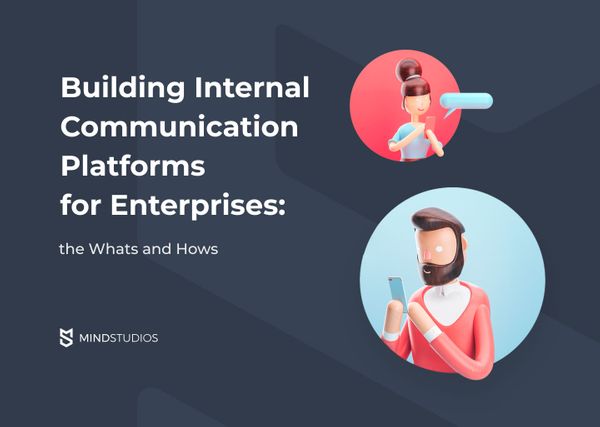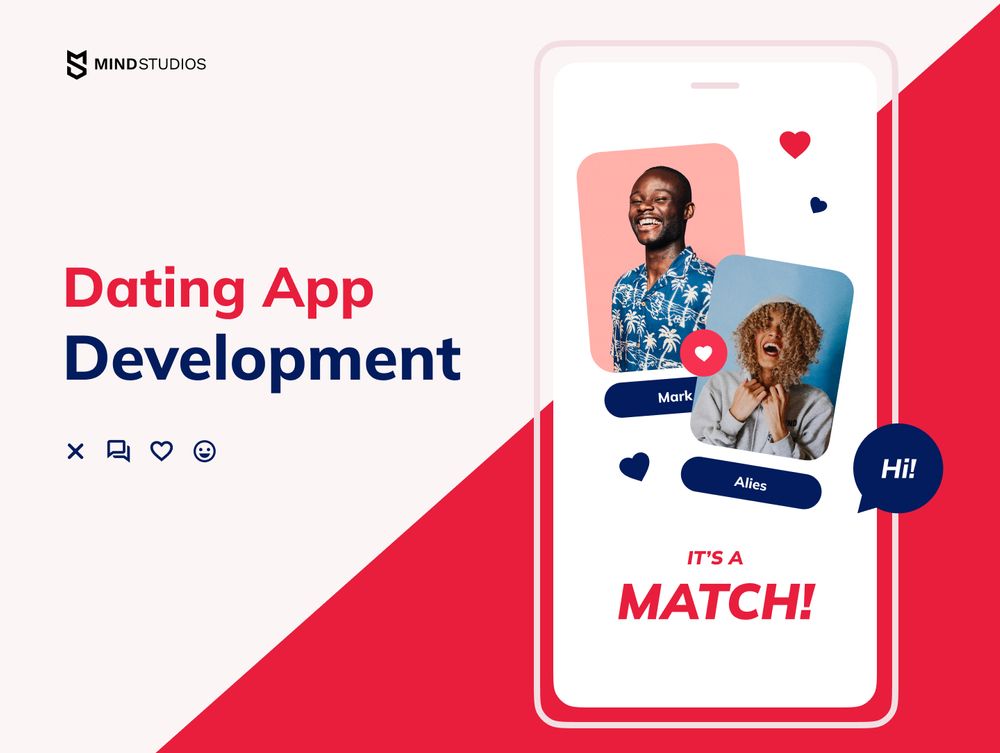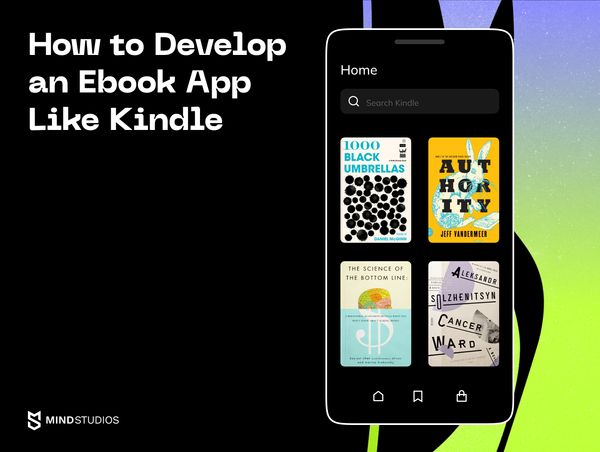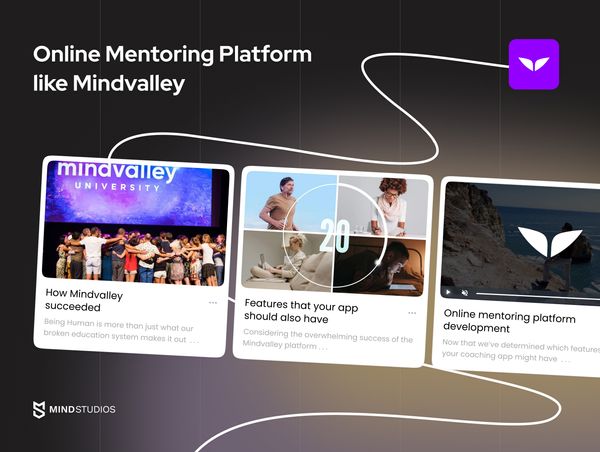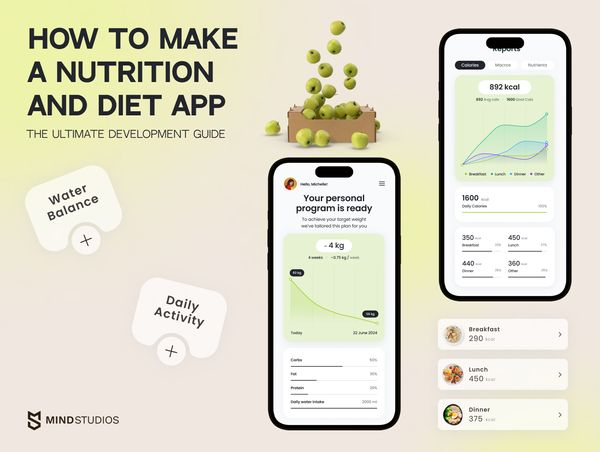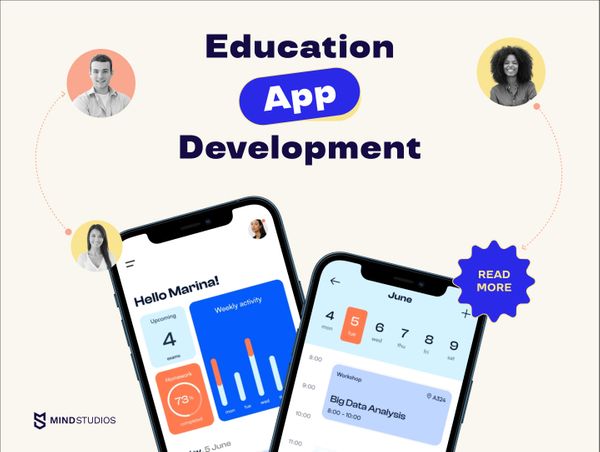
In this article, we tell you how to create an educational app for kids and adults, what trends there are in the niche, and how to make money by providing e-learning.
At Mind Studios, we’ve worked with all kinds of tech and created all kinds of features that can be of use in an educational app. Here in this article, we’d like to share our expertise on the creation of applications for learning.
What are educational apps?
Simply enough, educational mobile apps are apps that help people learn. You can learn all kinds of things on the go using your smartphone or tablet: a new language, how to drive, or how to code; study engineering; or catch up on your school curriculum. Nowadays, educational apps are even used in schools and universities to aid instructors.
There are several parameters by which one can categorize educational apps: for example, by target audience:
- Learners
- Teachers
There will be differences in features between e-learning app development for learners and teachers. And apps under both of these categories can be categorized further. Let’s go over the most widespread types of educational apps.
Educational apps for learners
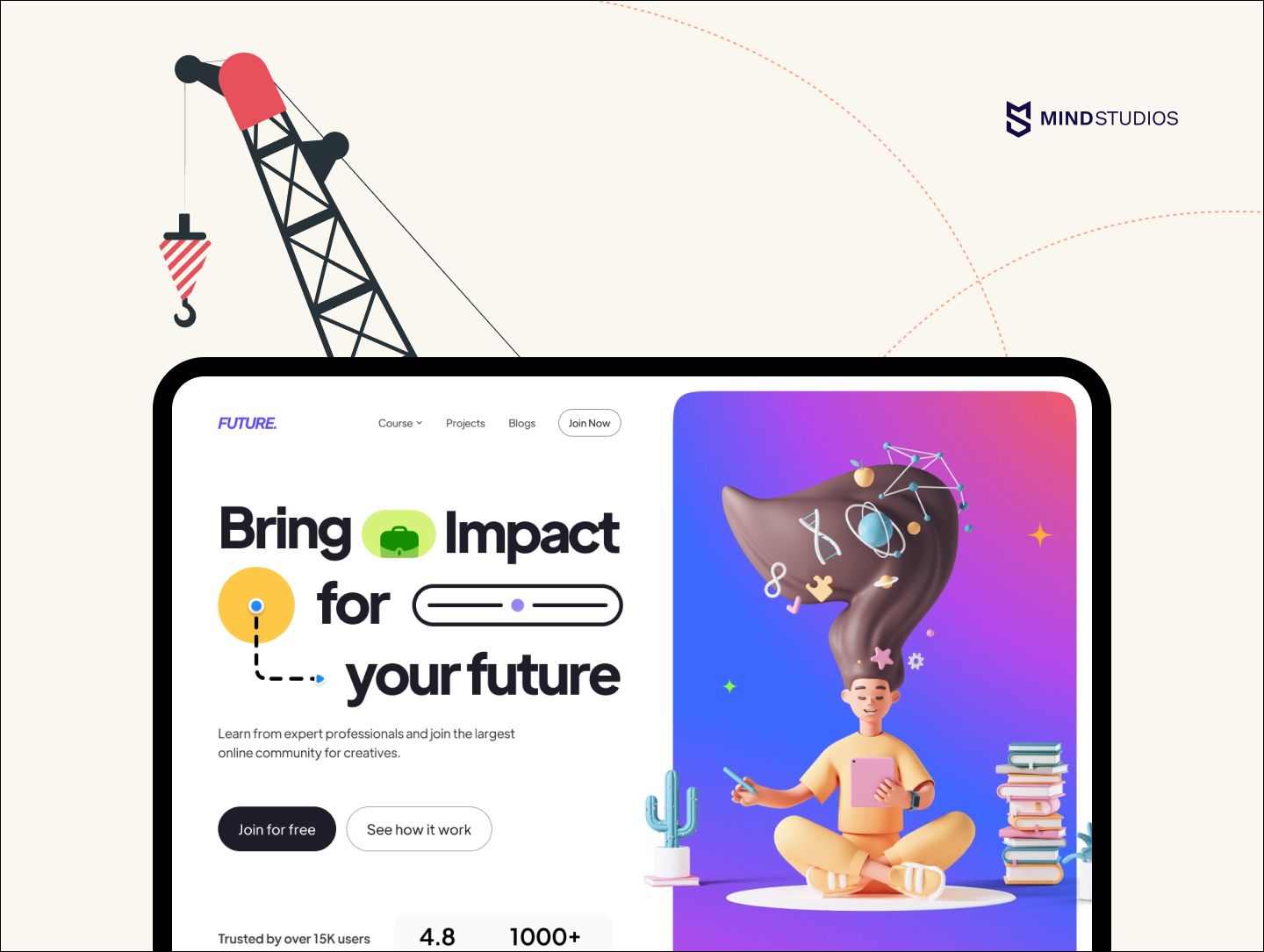
Most popular educational apps are targeted at learners, so let us start with talking a bit about different types of educational apps that teach users something.
Apps for language learning
Among the many different types of educational apps, language learning apps are the most popular: everyone knows the Duolingo app, Busuu, Babbel, Memrise. Language learning is also a field with a lot of opportunities since there’s no one right way to learn a language.
Apps to learn specific subjects
There are apps created to teach users a single subject. It can be virtually anything: math, driving theory, coding, drawing, or mastering a musical instrument. Apps that offer to teach one language instead of a selection of languages can also fall into this category. This category probably accounts for the largest chunk of educational apps out there.
Apps for kids to facilitate their development
Nowadays, kids get ahold of tablets rather early. Hence, some skills previous generations learned with the help of adults can now be entrusted to mobile apps. Educational apps for kids are simple, colorful, and built with an emphasis on gamification.
Apps that offer supplemental and reference materials
These apps could provide a dictionary or an encyclopedia, a catalog of documents, or audio or video lessons on a specific topic or on a broad selection of topics. Basically, these apps are digital libraries.
Apps catering to online courses
Services like Coursera, Udemy, Udacity, edX, and LinkedIn’s Lynda offer online courses with a full set of features a classroom course would provide — lectures by renowned specialists, graded homework assignments, feedback on your work, and certificates of completion. The difference is that students choose what, when, and where to learn.
Apps for exam preparation
Exam preparation apps are focused on a specific exam. A standard math learning app will be different from an app that helps learners prepare for the SAT math section. An English for foreigners app won’t be the same as an app to help users pass the TOEFL or IELTS exams (qualification exams for non-native English speakers to be admitted into an English-language university program). Exam preparation apps create an exam-like environment, both in topics they cover and in structure.
Gamified learning aid apps
It’s not a secret that studying is often a boring, albeit necessary, process. Enter gamification — a way to break the routine and study while having some fun. Gamified learning aids employ storytelling practices, animations, as well as a wide range of quizzes and puzzles to help students learn to enjoy studying. While gamification is used the most in educational apps for kids and teens, nowadays, it’s been used more and more in apps aimed at adults as well.
Apps for classroom curriculum
Strictly speaking, these are often systems consisting of two different apps — one for students and one for teachers. These apps help students with their coursework and help teachers with evaluation. These apps became particularly popular due to necessity during the COVID-19 lockdowns but they’re older than that. This type of apps typically allow file sharing, video lessons, scheduling, and more.
Educational apps for teachers
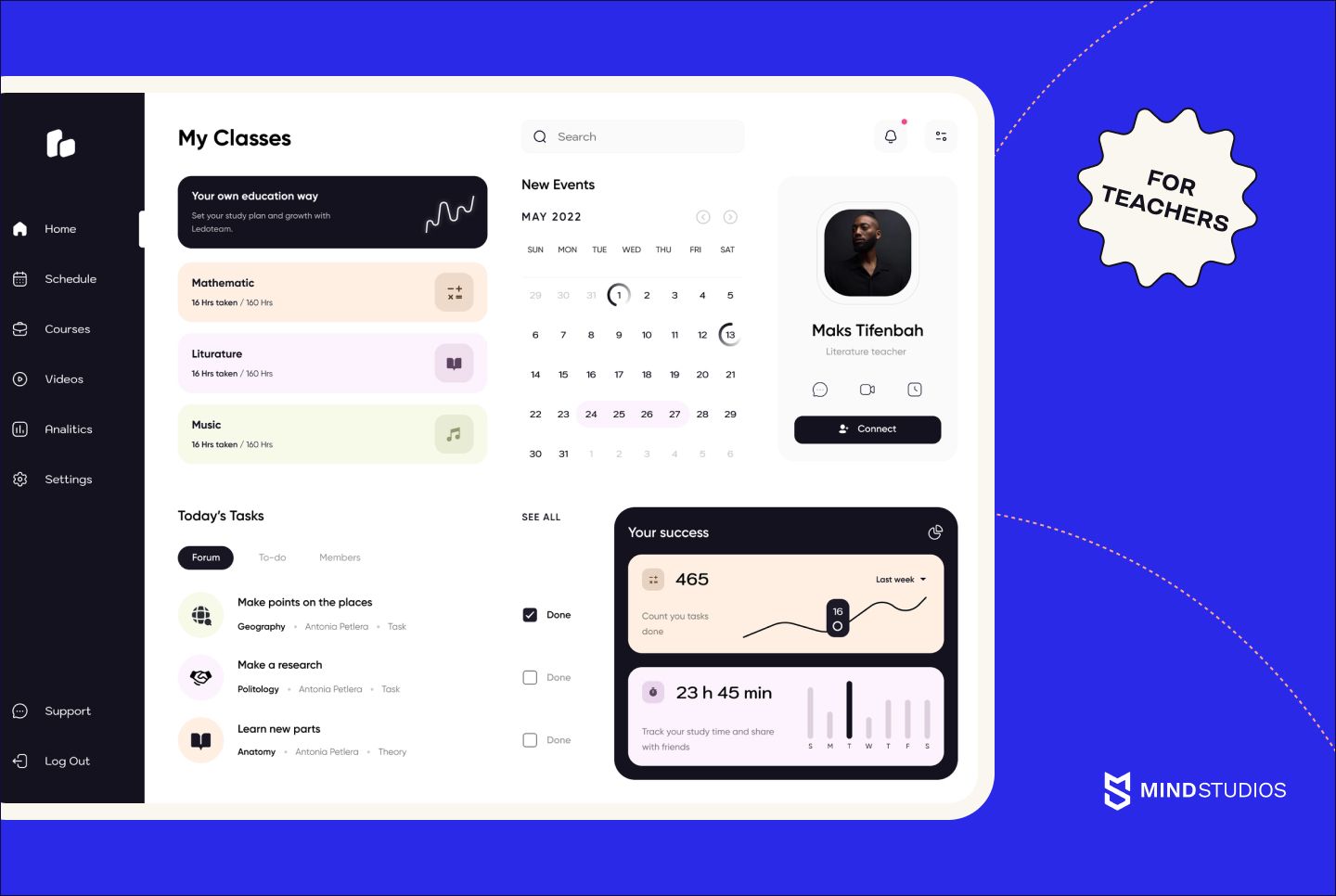
It’s also a valid option to build an educational app for teachers instead of learners. Educational apps for teachers aren’t as varied and widespread as apps for students, but they usually offer everything a teacher might need in a single app: tools for planning, scheduling, grading, generating charts and analytics. However, it’s not unusual to find separate apps for each task in case a teacher doesn’t need all of these features.
Apps to store teaching material
Teachers tend to have an abundance of materials, especially if they teach classes of different levels. In many cases, storing materials on their devices can be inconvenient — devices can sustain damage or be unavailable when needed. Simple storing of files in the cloud might also be not up to par in terms of usability.
This is where cloud-based teacher aid services come into play. These services offer not only simple storage but also an ability to manage and edit materials as well. For example, it will be of utmost convenience if teachers could edit PDF files, documents, video lessons, and presentations without downloading them.
Planning and scheduling apps
Teacher is a job that requires quite a bit of organizing, both when it comes to materials and teacher’s time. Therefore, planning and scheduling apps are a must in every teacher’s desktop icons. A sophisticated app with calendars and advanced event planning options will certainly become a hit among teachers.
Grading apps to evaluate student progress
Teachers spend a big chunk of their time grading assignment, calculating midterm and final grades, and compiling reports manually. Grading apps can simplify these processes. Some grading apps can automatically grade simpler assignments like quizzes; others focus on tracking attendance, behavior, and assignment grades to help calculate grades and share reports with the school management and parents.
Testing apps to assess performance
Finally, the most significant time-eaters in a teacher’s job — creating and grading assignments. Testing apps can streamline both the creation of tests and quizzes and the grading itself. The teacher just needs to enter the questions and the answer keys to separate parts of the app. This frees an enormous amount of time teachers can use on interacting with students and developing better teaching plans.
You may also be interested to know how to develop an online mentoring platform such as Mindvalley.
Educational apps market
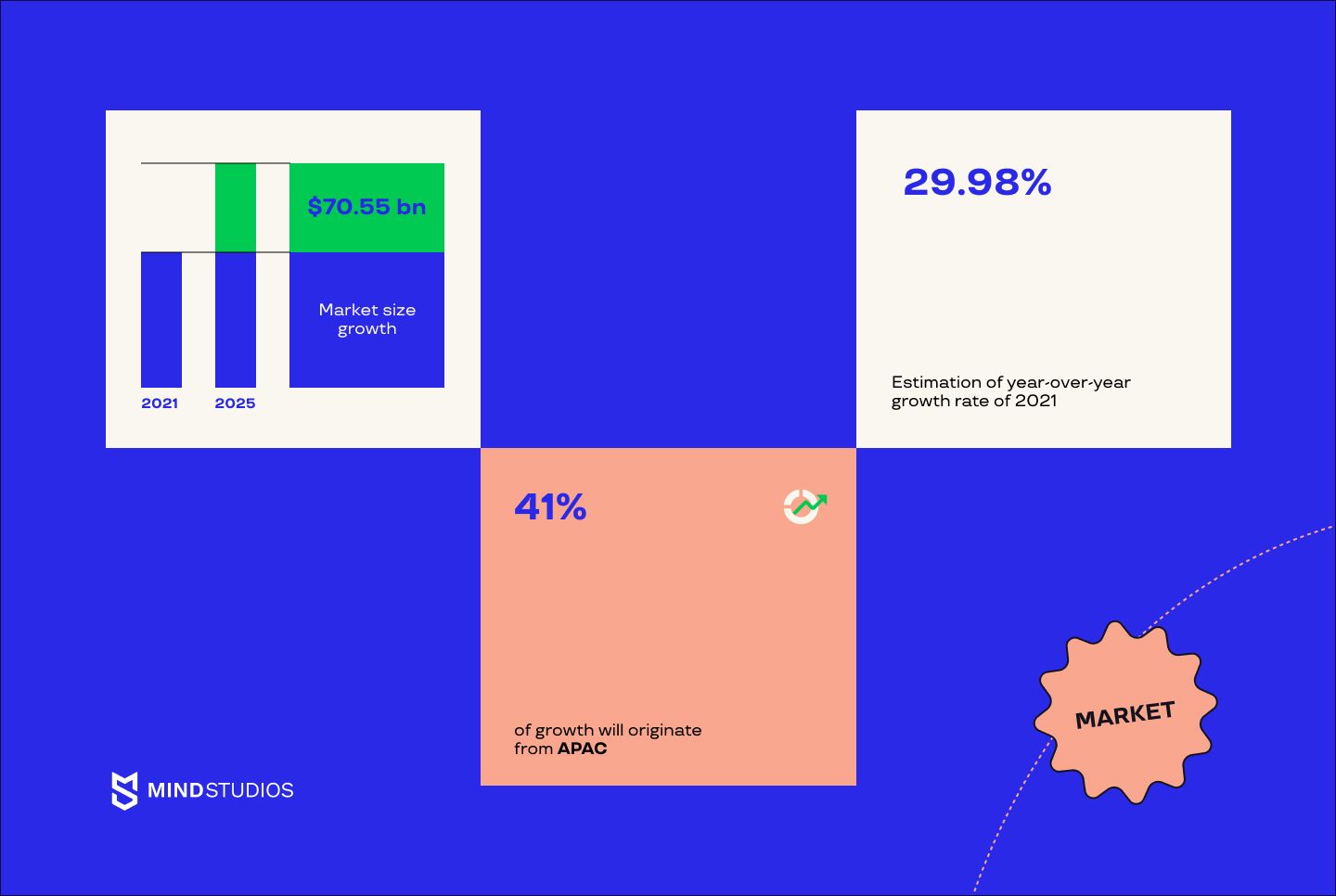
With the evolution of technology, education has stopped being limited to kids and young adults. Today, even the busiest of us can learn new skills, expand our expertise, and even get degrees without having to visit a campus. That’s one of the reasons educational apps are all the rage these days, evolving fast and involving more and more forward technologies.
By the end of the first quarter of 2022, educational apps were #3 on the list of most popular app categories in the Apple App Store, right after games and business apps. On Google Play Store, educational apps are the #2 category after games.
According to research by IMARC, the educational app market is projected to grow at a CAGR of 24.3% globally between 2021 and 2027. Another report by Technavio states that the market will reach $70.55 billion by 2025.
The market growth is evident across multiple research. If you want to build an educational app for mobile or web, there’s no time like today. Now let’s talk at length about the process of education app development.
Features to include in your educational app
The features you’ll want to include will differ depending on the kind of app you’re building — whether for learning or teaching. However, some features are must-haves in any education app.
Login/Signup
Logging in and signing up automatically with your Google (or other email) account will be a huge perk for any user since it significantly shortens the signup process compared to typing in an email or phone number and personal details. Learners will also appreciate an option to sign up with a social network. Facebook is the most common option, but the more options you add, the better: consider Twitter, LinkedIn, and others.
User profile
In the user profile, students can check their progress, navigate the software, and make adjustments to their schedules. A user profile can let teachers set their schedules, upload materials, and see analytics and statistics about students to better accommodate their needs.
Scheduling
This is an absolute must for teachers’ apps and for students’ apps that offer live streams of lectures or real-time communication with teachers and other students. Although a selling point of the majority of self-learning apps is that users can study when it’s convenient for them, it can still win a favor of users who prefer organizing their self-paced studying. It’s not always a first-priority feature, though.
Learning materials
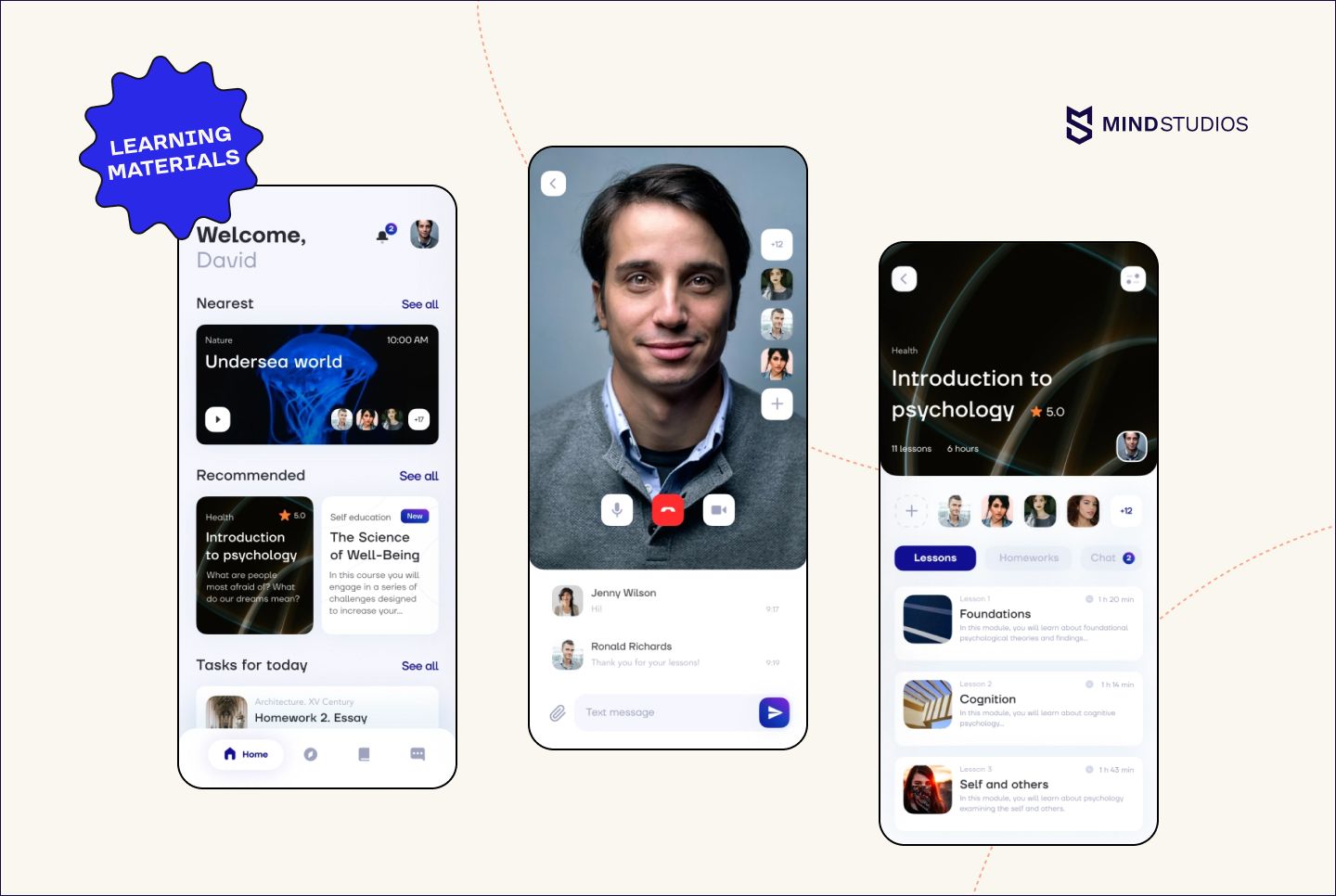
Materials must come from a reputable source and/or be proven scientifically. Depending on the subject, learning materials can benefit from categorization: by topic, complexity, time necessary to complete a lesson, etc. Also, learning materials come in different types, so dividing them by type will also come in handy:
- theory (grammar for language learners, the traffic code for those learning to drive, etc.)
- interactive text exercises
- video/audio lessons
- live-streaming lectures
- tests
Search functionality
Students should be able to find sections they need and come back to completed lessons. Teachers need to be able to make adjustments to the programs they teach. The longer the course, the more important it is that your mobile application has solid search functionality — to let users effortlessly find the parts they need.
Push notifications
Reasons might vary — from laziness to work tasks piling up — but it’s not unusual for students to skip on studying. Push notifications bring users back faster than emails. For teachers, push notifications are even more valuable: missing a lesson as an instructor can be a huge blow to one’s reputation. You can also use push notifications for promotion and to ask users to rate your app in the app store.
Statistics and analytics
Both students and teachers benefit from seeing statistics. The ability to identify blind spots in knowledge helps adjust the program and eliminate issues.
Social sharing
This feature will be especially appreciated by students. Integration with social networks is handy for learners; sharing progress with friends boosts confidence. And by implementing one-click sharing, for example, you enhance your app’s chances of gaining new users among your existing users’ friends.
Cloud integration and syncing
It’s common for both learners and teachers to use several devices. Schools might provide devices of their own, and app users can have their own personal devices. Some students prefer learning with a tablet; others only have a smartphone. Some might use a smartphone on the go and a tablet or web at home. It’s important that progress is synced via the cloud and that the app can be opened on as many devices as possible.
Payment functionality
If your educational app isn’t non-profit (e.g. funded by an educational institution), you’ll need to integrate payment functionality. Ads as a monetization model aren’t considered the best option as they interfere with focus, hence you’ll most likely have to choose between paid download, subscription, and in-app purchases of some sort. Subscription is the most widespread model of the three, and to implement it, you’ll need to integrate a payment gateway.
Top performers
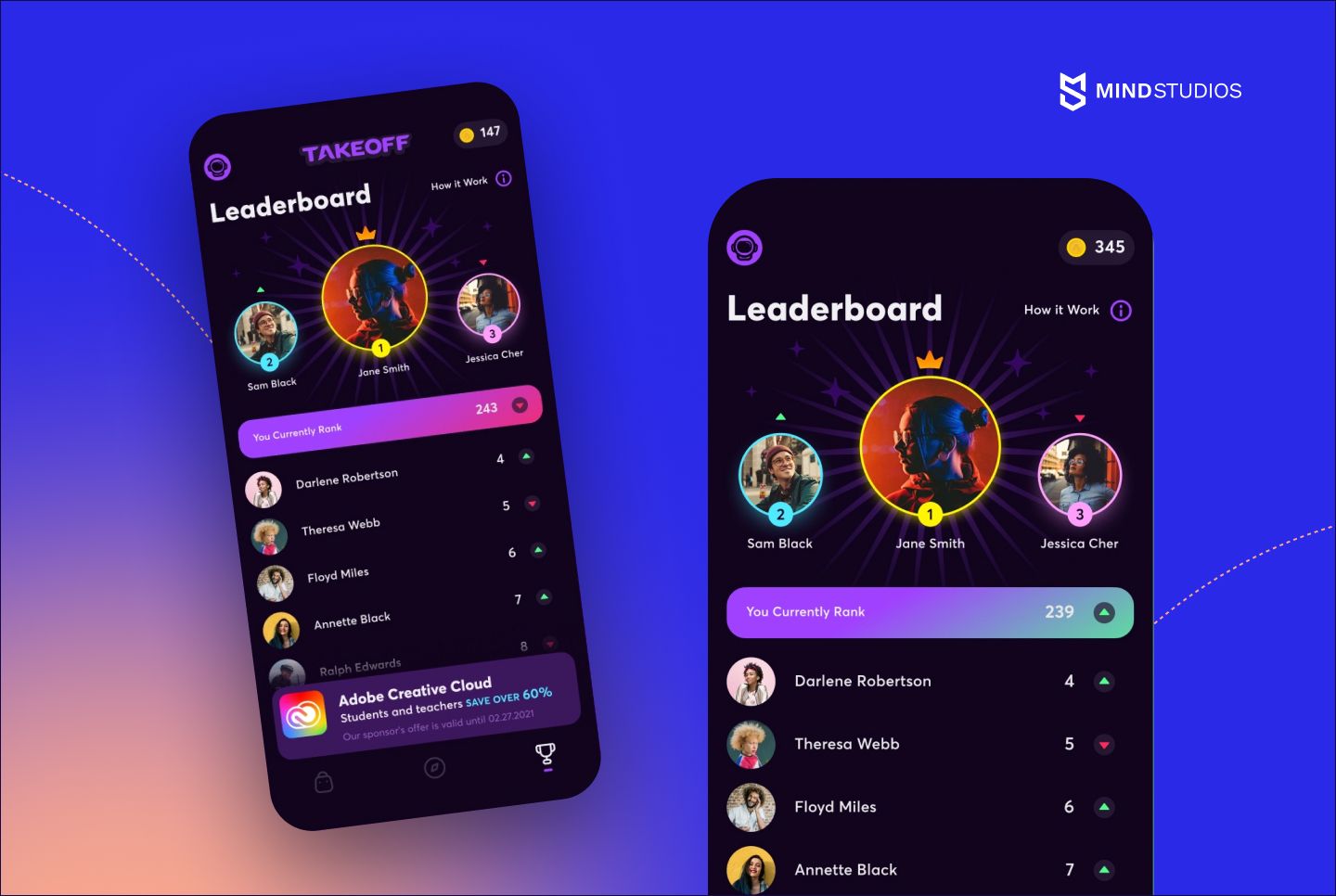
A little competition goes a long way in pushing people to learn faster, do more, and come back more often. But here, the situation is a little trickier — too much pressure and too many forceful reminders that there’s someone out there who performs better can be a blow to a learner’s morale. Think this feature through so that people don’t abandon your app.
Customization
Customization is important in two different parts of an online learning app development.
- Customizable interface. To make your app more appealing to users, offer interface customization. This can include several color themes but we also advise you to consider accessibility customization like changing text size and typeface. If applicable, you can employ text-to-speech and voice navigation for learners with disabilities.
- Customizable learning programs. Sometimes, learners turn to apps when they struggle with part of the subject and not the whole program. Or they can be acquainted with some parts of the curriculum but not the whole. You might allow users to skip sections they already mastered. Offer the option to skip by jumping straight to the section’s final test. And when users need to repeat a section to refresh the knowledge, allow them to go back for certain past topics without having to repeat the whole course.
What to consider when developing educational apps
In addition to features, there are things we advise you pay extra attention to if your goal is to build an educational app that will have global success. You might want to include these into your MVP or postpone them for later stages of development, but keeping them in mind will surely benefit your e-learning app.
Gamification
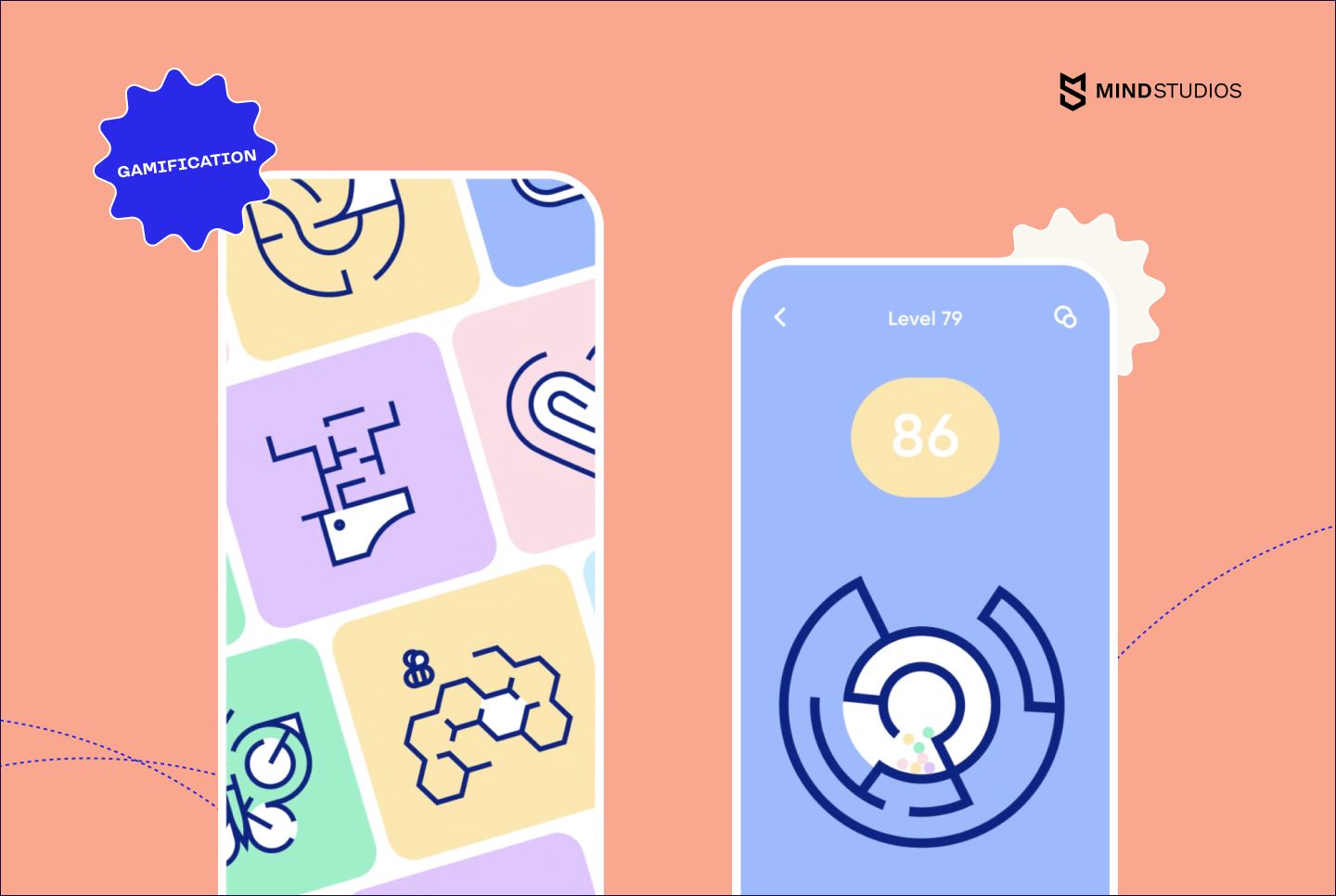
If you’re planning to create an educational app for kids, you’ve likely considered adding a gaming element. But gamification is just as suitable for apps targeted at adults. The “gaming is for kids” idea was debunked years ago. Gaming elements help learners stay focused and interested, whatever their age.
Gamification can take different shapes:
- Achievements and tokens that show learners’ progress
- A story that users explore as they go up the learning ladder
- Learning materials offered with cartoons or funny video clips
Or you can come up with a completely new element when you start educational game development. Brainstorming during the idea validation stage might help you find a unique feature with gaming elements.
Localization
Learning is universal, and it’s not unusual for educational apps to be used all over the world. That’s why it’s worth investing in quality localization when developing an educational app.
Visuals and sound
Most education app developers agree that apps for learners should use bright colors and images. Our brains are built in such a way that connecting learning material with visual content helps us memorize things better.
Quality sound is a must for language learning apps. For these apps, audio should be recorded by native speakers, preferably with a variety of local accents (check out Memrise as an example). For other types of learning apps, it depends on the educational content; but most subjects benefit from audio, even if it’s just quiet background music.
Virtual and augmented reality
Both virtual reality (VR) and augmented reality (AR) are expensive features to implement, so it’s reasonable to take a moment to consider if doing so is justified for your app. However, VR and AR are hot topics today and can add an edge to your app, making it stand out on the app store.
UI/UX design of an educational app
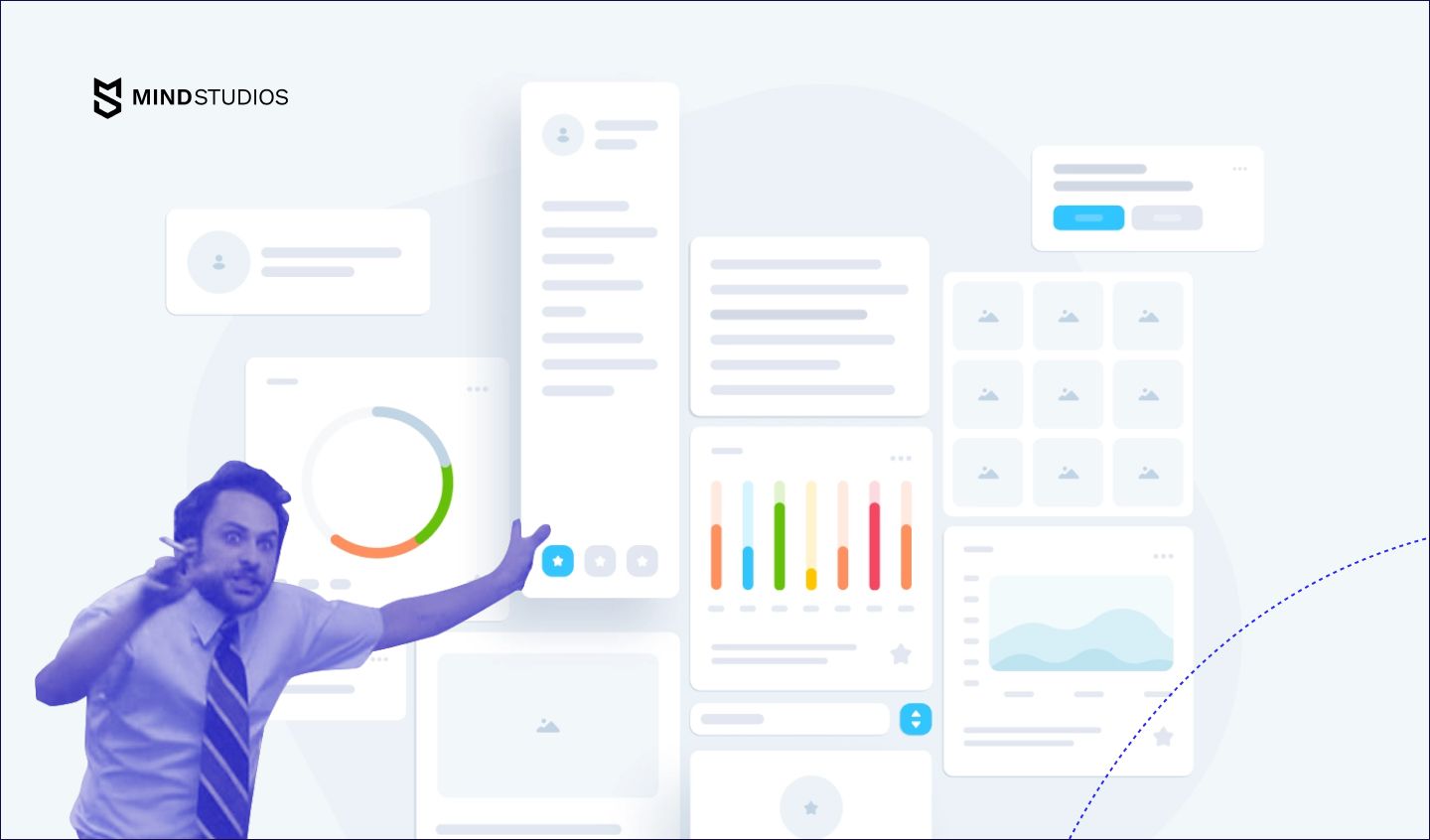
With the amount of competition on the e-learning market, you’ll need to capture and hold your users’ attention to achieve success. The best way to do that, aside from offering quality learning, is with the help of a UI/UX design.
Capture attention with unique look
When it comes to UI — color scheme, visuals, etc. — there’s no limit to options. Depending on your target audience and the topics your app will cover, you can make it bright and cartoonish, fill it with quality photos and videos, or make in as minimalistic as possible.
The important thing here is to research apps in the same niche — those covering the same topic, for example. You need to analyze them and choose the most appropriate ways to stand out without it being against the “spirit” of what you’re teaching and the behavioral patterns of your target audience.
Engage users with cleverly designed learning activities
This part includes both your curriculum plan creation and the in-app experiences of your users. In most educational apps, you might notice that they offer several types of activities that mix and mash.
For example, in language learning apps, new words often blend with audio/video samples, change into “fill in the gaps” and quiz-type tasks; some tasks are timed and some aren’t.
All these aren’t built in randomly — a team of designers together with the curriculum creators work out the proper time to switch the task so that learners remember new information well and not get bored.
Prevent users from leaving with intuitive UX
We never tire from repeating this: any app, and more so an educational app, needs to be intuitively understood. The succession of screens, the location of menus and buttons, as well as the frequency and size of pop-up notifications (like those to rate the app) shall be carefully arranged.
Take into account the current trends in design, analyze the apps your target audience uses (learning apps as well as other types of apps). This will allow you to create an app for e-learning that people won’t want to abandon.
Required tech stack for your educational app
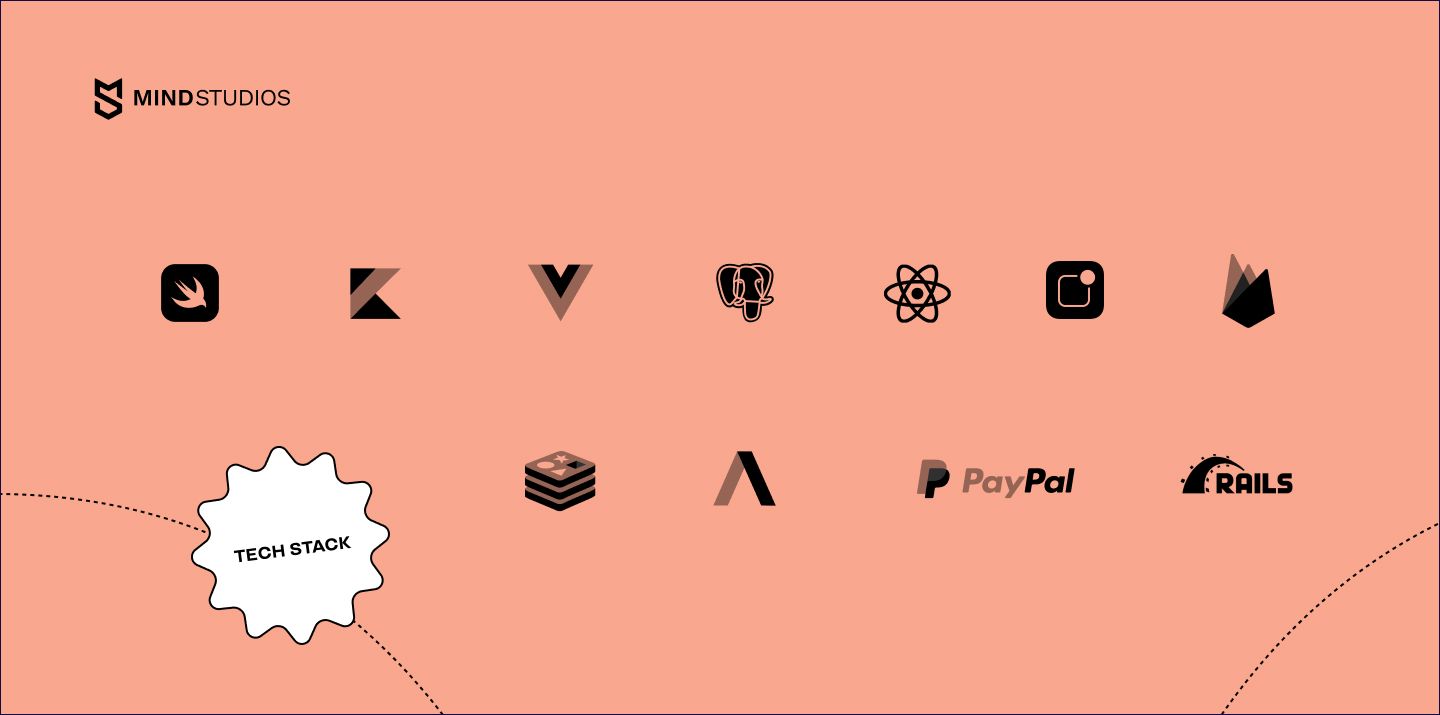
What technology might be useful for education app development? We can offer a tech stack from our senior developers.
- iOS app: Swift
- Android app: Java, Kotlin
- Web app: JavaScript, HTML, CSS, Vue.js, React.js
- Backend: Ruby on Rails, Elixir/Phoenix, Node.js
- Database: MySQL, PostgreSQL, MongoDB
- CDN (for global apps): Cloudflare, OVH CDN
- Login/Sign-up: Facebook API, Google API, Amazon SES
- Forgotten password: Amazon SNS
- Scheduling: Google Calendar API
- Storage: Amazon S3, Google Cloud Storage
- Search: ElasticSearch
- Push notifications: Firebase SDK, APNs
- Social sharing: Facebook API, Twitter API
- Payment functionality: PayPal, Stripe
- Video/audio playback: AWS Lambda
- Streaming (for online lectures): Amazon Live Streaming AWS
How to monetize an educational app
Here are your options for how to make money with an educational app.
Freemium
The most typical monetization model for educational apps is freemium — you offer your users an abridged version and suggest they buy the full version if they like it. It can be a one-time purchase, but in most cases today among educational apps, it’s a subscription.
However, even the free version should be fully functional.
For example, the free version of the Memrise language learning app has all the same lessons as the paid one, but if you pay the subscription fee you’ll get access to automated pronunciation checking and a grammar bot. These aren’t features every learner acutely needs, especially if they use the app as a support rather than a main source of materials, but they make good practice features nonetheless.
Free trial
Offering a free trial is another common monetization model among educational app developers. The popular brain training app Elevate uses this model. With a free trial, you give users full access to all app features for a limited time and ask them to pay if they’d like to continue. Two weeks is usually enough to get acquainted with an app but not enough to get tired of it.
Ads
Ads as a monetization model should be used with caution in an educational app. Interrupting a lesson with an ad disrupts the user’s focus and is seen as a big drawback. If you decide to go for ads, your educational mobile app development company might have strategy suggestions based on market research.
Paid download
Finally, there’s the paid download monetization model. This is a valid option for education service providers with an established business that already has clients. Schools, universities, and owners of all kinds of courses can hire educational app developers to expand their reach and facilitate their students’ learning experience.
How much does it cost to develop an educational app?
With learning app development, a lot of things need to be considered when estimating the cost of an app. For example, will your app need to support audio playback? Save mobile games, few apps require audio integration as much as apps for studying.
Additionally, if you’re thinking about whether to make an online educational app for iOS or Android, we recommend you build both: even in a single classroom there are usually students with both types of devices.
The core development team for an educational app will look something like this:
- Project manager: 1
- UI/UX designer: 1
- iOS developers: 1–2
- Android developers: 1–2
- Backend developer: 1
- QA specialist: 1
- Sound designer: 1
Here is a rundown of possible time and money investments in developing an app for learning:
| Stage | Backend, h | iOS time, h | Android time, h |
|---|---|---|---|
| Project management | 20 | 80 | 80 |
| Discovery | 16 | 16 | 16 |
| UI/UX design | - | 120 | 60 | Development: |
| Login/Sign-up | 32 | 40 | 40 |
| Profile | 16 | 20 | 20 |
| Scheduling | 40 | 32 | 32 |
| Learning materials storage | 64 | 40 | 40 |
| Learning materials view | 24 | 32 | 32 |
| Search | 18 | 20 | 20 |
| Push notifications | 24 | 16 | 16 |
| Statistics | 32 | 40 | 40 |
| Social sharing | 8 | 24 | 24 |
| Cloud integration and syncing | 64 | 40 | 40 |
| Payment functionality | 40 | 32 | 40 |
| Leaderboards | 32 | 40 | 40 |
| Admin panel | 80 | - | - |
| Testing | 64 | 64 | 64 |
| TOTAL hours | 574 | 654 | 604 |
| TOTAL cost | $25,830 | $29,430 | $27,180 |
Localization will add another layer to the cost to make an educational app. So will VR or AR integration if you decide to go for it. If you’re making a language learning app, you’ll also need to hire native speakers to record words and sentences. There are many extras for different types of learning apps. But if we consider developing the core app, educational app development services will cost you about $82,440 and up.
Conclusion
Education is an important part of every person’s life. Some experts claim — with scientific proof, at that — that self-education with mobile apps will someday replace most, if not all, classroom courses and institutions. Whether this future is close or not we don’t know, but we do know that education is already a profitable niche in today’s mobile market. If you have questions about how to create an educational app or would like an estimate for your own learning app, hit us up for a free consultation.


